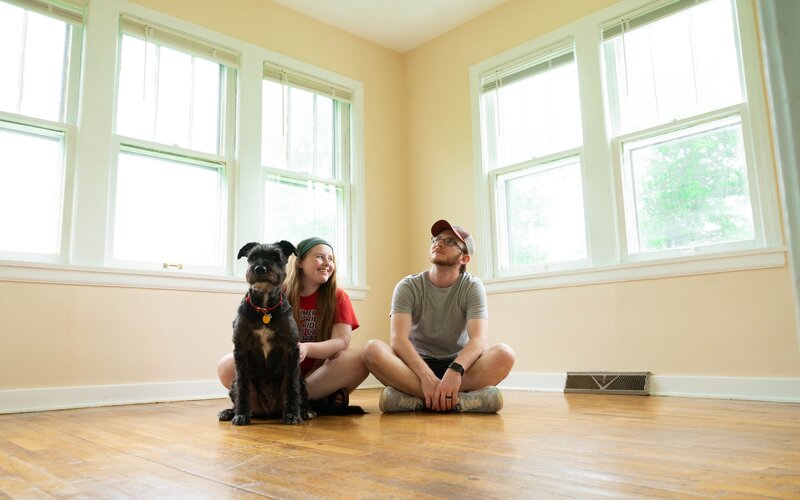2019 was a turbulent year for the Australian economy, with three rate cuts bringing the cash rate to a historic low of 0.75%. With borrowing cheaper than ever, house prices recovering, and fintech shaking up the industry, there are plenty of changes afoot in Australian finance.
As we roll into the early days of a new decade, here's some of what you might expect to see this year.
1. More first home buyers entering the market
Despite being met with some criticism, the First Home Loan Deposit Scheme has kicked off.
This scheme will help eligible first home buyers secure a home loan with as little as a 5% deposit while saving them from paying thousands for Lenders Mortgage Insurance (LMI) - which is typically required for loans with a deposit of less than 20% - with up to 15% of the property's value guaranteed by a government entity.
To be eligible, first home buyers have to earn less than $125,000 a year, or $200,000 combined for couples. To ensure it is only used for the purchase of an entry level home, the scheme is limited to properties priced under the set limits for each state and territory.
The scheme is also limited to 10,000 home loans per financial year - quite a small number, considering there are over 100,000 loans granted to first home buyers per annum.
2. House prices continuing to rise
Property experts love to predict a boom and the conditions in 2020 seem ripe for rising house prices. House prices finished 2019 on a high with the national average lifting 2.3% over the year.
CoreLogic's Head of Research Tim Lawless expects house prices to rise in 2020 before slowing down.
"Housing values are expected to rise through 2020 across most regions, however, the year may bring about a change in the growth dynamic with the larger cities seeing a slowdown in the rapid rate of growth recorded through the second half of 2019," he said.
3. Rock bottom interest rates
The Reserve Bank has signalled it will lower the cash rate in 2020, with most economists predicting a February rate cut and possibly another after that, bringing the cash rate to a rock bottom low of 0.25%.
If the cash rate falls this low, expect home loans to fall well below the current low borrowing costs we're seeing below.
4. More customers turning to neobanks
What's a neobank you ask? In a nutshell, it's a type of bank that lives entirely on your smartphone with no branches or the sort of online banking most traditional banks offer. Because they don't have the overheads a traditional bank does, they can pass these savings onto you in the form of better interest rates and lower fees.
Over 2019, Australia's neobanks were mostly focused on offering high-interest savings accounts, but 2020 could see more neobanks begin to offer competitively-priced home loans.
5. Open banking finally kicking off
Initially set for launch in February, open banking has been pushed back to July.
When it does launch, Australian consumers could have more control over their financial data, choosing how their data is shared and who with. It is expected to make it easier for people to switch to a better bank or lender, thereby encouraging more competition between banks and providers who will have to work even harder to offer their customers the best deals.
6. Rising insurance premiums
Australia has been ravaged by bushfires over the last few months, and with the number of bushfire-related insurance claims climbing, pressure is mounting on home insurers to lift their premiums.
According to the Insurance Council of Australia, over $238 million worth of damage has already been logged since early November in 3,870 claims from 236 postcodes around the country. The number of claims is only expected to rise as the blazes continue to burn.
7. Continued slide in new car sales
If new car sales are the barometer of economic health, our economy is falling into the toilet. New car sales drove off a cliff in 2019 with just over 1 million new vehicles sold in 2019 - the lowest annual car sales figure since 2011.
It's likely our new vehicle market will face similar challenges in 2020, with the possibility of a recovery.
8. Flat employment and wages growth
Wages growth has slowed to a halt over the last few years, and is likely to remain low for most of the year thanks to the softened economy.
It's a similar story for the jobs market but if the economy starts performing after the rate cuts, the unemployment and underemployment rate could head lower which should drive up wages.
9. Volatile share markets
With interest rates at record lows, many are expected to turn to the share market in the hope of making a half-decent return on their money.
Globally, 2020 is expected to be another volatile year for the share markets with Trump seeking re-election, the potential for a US-China trade war, worries over the risk of a global recession, and the continuing uncertainty around Brexit.

Ready, Set, Buy!
Learn everything you need to know about buying property – from choosing the right property and home loan, to the purchasing process, tips to save money and more!
With bonus Q&A sheet and Crossword!



 Harrison Astbury
Harrison Astbury
 Harry O'Sullivan
Harry O'Sullivan


 Brooke Cooper
Brooke Cooper

